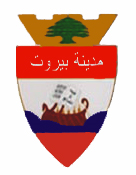Beirut
Quote
This is Beirut...
Home of the Alphabet
Home of all religions
Home of a 15 years of civil war (1975-1990)
Home of the Israeli invasion (1982)
Home of a 15 years under syrian occupation (1990-2005)
Home of Islamic Radicalism
Home of Hezbollah and the so called terrorism
Home of Christian fanaticism
Home of militias and armed civilians
Home of corrupted politicians and unfaithful cardinals
Home of Anarchy and organized chaos
This is Beirut... It's a home for those who don't have any!
-- Author Unknown
Appearance
City Device
City Motto
Berytus Nutrix Legum (Latin: Beirut, mother of laws)
Climate

Beirut has a hot-summer Mediterranean climate characterized by warm days and nights, yet summers can be virtually rainless. Autumn and spring are cool, with rainy winters. August is considered the only really hot month, with a monthly average high temperature of 32 °C (90 °F), and January and February are the coldest months, with a monthly average low temperature of 11 °C (52 °F). The prevailing wind during the afternoon and evening is from the west (onshore, blowing in from the Mediterranean); at night it reverses to offshore, blowing from the land out to sea.
The average annual rainfall is 893 millimetres (35.2 in), with the majority falling in winter, autumn and spring. Much of the autumn and spring rain falls in heavy downpours on a limited number of days, but in winter it is spread more evenly over a large number of days. Summer receives very little rainfall, if any. Snow is rare, except in the mountainous eastern suburbs, where snowfall is common due to the region's high altitudes. Large snowstorms, however, have occurred as recently as: 1920, 1942 and 1950.
Demonym
Beiruti
Economy
Beirut's economy is service-oriented with the main growth sectors being banking and tourism.
In an area dominated by authoritarian or militarist regimes, the Lebanese capital was generally regarded as a haven of liberalism, though a precarious one. With its seaport and airport—coupled with Lebanon’s free economic and foreign exchange system, solid gold-backed currency, banking-secrecy law, and favourable interest rates—Beirut became an established banking centre for Arab wealth, much of which was invested in construction, commercial enterprise, and industry (mostly the manufacture of textiles and shoes, food processing, and printing). The economy of Beirut is diverse, including publishing, banking, trade and various industries. During that period, Beirut was the region's financial services center. At the onset of the oil boom starting in the 1960s, Lebanon-based banks were the main recipients of the region's petrodollars.
Beirut is the focal point of the Economy of Lebanon. The capital hosts the headquarters of Banque du Liban, Lebanon's central bank, the Beirut Stock Exchange, the head office of Lebanon's flag-carrier Middle East Airlines, the United Nations Economic and Social Commission for Western Asia, the Union of Arab Banks, and the Union of Arab Stock Exchanges.
Banking & Finance
The business of banking within Lebanon in general and Beirut specifically, is the very life-blood of this small nation. The International Monetary Fund (IMF) reports of the last thirty years suggest that the monetary reserves of Beirut are usually in excess of three times the GDP (Gross Domestic Product) of the city's industrial and production infrastructure; in simple terms, this means that the banks of Beirut can cover 80% of all the currency and assets of the city's businesses. Lebanese banks, specifically those in Beirut offer higher interest rates than those found in the European Union or anywhere in the Americas.
To further enhance Beirut's attractiveness to foreign investment, the Lebanese Banking System possesses several characteristics that promote the role of Beirut as a regional financial center, in terms of ensuring protection for foreign capital and earnings. The Lebanese currency is fully convertible and can be exchanged freely with any other currency. Moreover, no restrictions are put on the free flow of capital and earnings into and out of the Lebanese economy. In September of 1956, Lebanon enacted a series of comprehensive banking secrecy laws that in short subjected all banks established in Lebanon as well as foreign banks' branches to a strict code of secrecy regarding foreign creditors and their assets. Additionally, later expansions on these banking laws ensured exemptions from income tax on all interest and revenues earned on all types of accounts opened in Lebanese banks. Furthermore, these same laws established a free banking zone by granting the Lebanese government the right to exempt non-residents' deposits and liabilities in foreign currency from income tax on interest earned.
Finally, since Lebanon remains a strict adherent to the Gold Standard, the Central Bank of Lebanon holds enough gold on hand to guarantee 80% of all of Lebanese currency in the market. Basically, this means that the Central Bank can easily cope with any unforeseen crisis in the future. And foreign investors find this a very attractive facet of the Lebanese economy and as such, foreign investment continues to grow by about 6% in lean years and can rise to roughly 8% in better seasons.
Tourism
The tourism industry in Beirut has been historically important to the local economy and remains to this day to be a major source of revenue for the city, and Lebanon in general. Before the Lebanese Civil War, Beirut was widely regarded as "The Paris of the Middle East," often cited as a financial and business hub where visitors could experience the Levantine Mediterranean culture. Beirut's diverse atmosphere and ancient history make it an important destination which is slowly rebuilding itself after continued turmoil.
According to the 2031 tourist statistics, 34% of the tourists in Beirut came from states within the Arab League, 33% came from European countries (mainly France, Germany, and Britain), and 16% from the Americas (about half of which are from the United States).
The largely pedestrianized Beirut Central District is the core of the Beirut tourism scene. The district is a cluster of stone-façade buildings lining arcaded streets and radial alleyways. The architecture of the area is a mix of French Architecture and Venetian Gothic architecture mixed with Arabesque and Ottoman Architecture. The district contains numerous old mosques and crusader churches, as well as uncovered remnants and ruins of the Roman era. The District contains hundreds of restaurants, cafes and pubs, as well as a wide range of shopping stores mainly in Beirut Souks. High-rise hotels and towers line the district's New Waterfront, marina and seaside promenade.
Another popular tourist destination in Beirut is the Corniche Beirut, a 4.8 km (3 mi) pedestrian promenade that encircles the capital's seafront from the Saint George Bay in the north all the way to Avenue de Paris and Avenue General de Gaulle south of the city. The Corniche reaches its maximum height above sea level at Raouché, a high-rise residential neighborhood rising over a giant white limestone cliff and facing the recognizable off-shore Raouché Rocks.
Hamra Street is a long cobblestone street connecting the Beirut Central District with the coastal Raouche area. The street is a large concentration of shopping stores, boutiques, restaurants, banks, street vendors, sidewalk cafes, newspaper kiosks, and a booming nightlife spurred by students from the neighboring American University of Beirut. The AUB campus is another popular visitor destination, composed of a cluster of 19th century red-roofed buildings dispersed on a wooded hillside overlooking the Mediterranean.
Gemmayzeh is Beirut's artistic Bohemian quarter, an old district full of narrow streets and beautiful historic buildings from the French era. The neighborhood is well known for its trendy bars and pubs, cafes, restaurants and lounges; most are directly located on Rue Gouraud, the main thoroughfare that cuts through the middle of the district. The street, which was named after the French General Henri Gouraud, has become one of Beirut's trendiest streets with numerous high-end restaurants and tourism facilities. The street borders the Saifi Village and runs east of Beirut Central District. In 2004, Travel + Leisure magazine called the street "SoHo by the Sea," due to its colorful and chic cafés amid 1950s apartment buildings and hole-in-the-wall shops.
Beirut is a destination for tourists from both the Arab world and West. In Travel + Leisure magazine's World Best Awards of 2006, Beirut was ranked the 9th best city in the world. That list was voted upon shortly before the 2006 Lebanon War broke out, but in 2008 The Guardian listed Beirut as one of its top ten cities in the world. The New York Times ranked it at number One on its "44 places to go" list of 2009. 2011 MasterCard Index revealed that Beirut had the second-highest visitor spending levels in the Middle East and Africa, totaling $6.5 billion. Beirut was chosen in 2012 by Condé Nast Traveler as the best city in the Middle East, beating Tel Aviv and Dubai.
Many of the tourists are returning Lebanese expatriates, but many are from Western countries. Approximately 3 million visitors visited in 2010; the previous record was 1.4 million in 1974. In 2012, San Diego television channel WealthTV featured Beirut, its culture and its people as a part of the travel series Uncover.
Like other forms of tourism, medical tourism in Lebanon is on the rise recently. Although visitors from neighboring Arab nations make up the bulk of medical tourism patients here due to its proximity, Beirut is strongly trying to woo more southern Europeans, Asians and North Americans to its land. Its Agency for Investment Development in Lebanon reports that growth in the medical tourism industry is growing by up to 30% a year since 2009. The country’s tourism ministry is working closely with the medical sector and top-class hotels to create an organized, quality medical destination. Major hotel and spa chains work with local clinics, travel agencies and the tourism ministry to create comprehensive healthcare and recuperation packages for foreign visitors. The government is highly involved in this industry and strives to make the process as easy as possible. Cosmetic surgery is a major component of medical tourism in Lebanon. Most of the foreign patients come for routine operations like plastic surgery, dental or eye Beirut’s hospitals are also capable of performing specialized procedures such as internal bypass surgery and other technical treatments. Its top clinics and hospitals like Sahel General are equipped to handle the full range of surgical procedures. Beirut-based Clemenceau Medical Center (CMC), affiliated with Johns Hopkins International, was ranked one of the world’s top ten best hospitals for medical tourism in 2012.
Geography
Beirut sits on a peninsula extending westward into the Mediterranean Sea about 94 km (58 mi) north of the Lebanon-Israel border. It is flanked by the Lebanon Mountains and has taken on a triangular shape, largely influenced by its situation between and atop two hills: Al-Ashrafieh and Al-Musaytibah. The Beirut Governorate occupies 18 square kilometres (6.9 sq mi), and the city's metropolitan area 67 square kilometres (26 sq mi). The coast is rather diverse, with rocky beaches, sandy shores and cliffs situated beside one another.
Districts of Beirut
- -- <<Aïcha bakkar>>
- -- <<Ain el Mreisseh>>
- -- <<Ain el Tineh>>
- -- <<Al Manara>>
- -- <<American University of Beirut>> (AUB)
- -- <<BCD Phase II Project>>
- -- <<El Zarif>>
- -- <<Hamra>>
- -- <<Joumblat>>
- -- <<Minet El Hosn>>
- -- <<Moussaitbeh>>
- -- <<Qoreitem>>
- -- Raouche
- -- <<Ras Beirut>>
- -- <<Sanayeh>>
- -- <<Snoubra>>
- -- <<Tallet el Khayyat>>
- -- <<Tel Druze>>
- -- <<Verdun>>
- -- <<>>
- -- <<>>
- -- <<>>
- -- <<>>
- -- <<>>
- -- <<>>
- -- <<>>
- -- <<>>
- -- <<>>
- -- <<>>
- -- <<>>
- -- <<>>
- -- <<>>
History
Introduction: Beirut's history goes back more than 5,000 years. According to the Encyclopædia Britannica, its antiquity is indicated by its name, derived from the Canaanite-Phoenician be'erot ("wells"), referring to the underground water table that is still tapped by the local inhabitants for general use. Excavations in the downtown area have unearthed layers of Phoenician, Hellenistic, Roman, Byzantine, Arab, Crusader and Ottoman remains. The first historical reference to Beirut dates from the 14th century BC, when it is mentioned in the cuneiform tablets of the Amarna letters, three letters that Ammunira of Biruta (Beirut) sent to the pharaoh of Egypt. Biruta is also referenced in the letters from Rib-Hadda, king of Byblos. The oldest settlement was on an island in the river that progressively silted up. The city was known in antiquity as Berytus. This name was taken in 1934 for the archaeological journal published by the Faculty of Arts and Sciences at the American University of Beirut.
The Hellenistic and Roman Periods
In 140 B.C.E. the city was destroyed by Diodotus Tryphon in his contest with Antiochus VII Sidetes for the throne of the Macedonian Seleucid monarchy. Beirut was soon rebuilt on a more conventional Hellenistic plan and renamed Laodicea in Phoenicia or Laodicea in Canaan in honor of a Seleucid Laodice. The modern city overlies the ancient one, and little archaeology was carried out until after the end of the civil war in 1991. The post-war salvage excavations (1993-to date) have yielded new insights in the layout and history of Roman Berytus. Public architecture included several bath complexes, colonnaded streets, a circus and theater; residential areas were excavated in the Future Garden of Forgiveness, Martyrs' Square and the Beirut Souks.
Beirut was conquered by Pompey in 64 BC. The city was assimilated into the Roman Empire, veteran soldiers were sent there, and large building projects were undertaken. Beirut was considered the most Roman city in the eastern provinces of the Roman Empire. Mid-first-century (common era) coins from Berytus bear the head of Tyche, goddess of fortune; on the reverse, the city's symbol appears: a dolphin entwines an anchor. This symbol was later taken up by the early printer Aldus Manutius in 15th century Venice.
In 14 BC, during the reign of Herod the Great, Berytus became a colonia and was named Colonia Iulia Augusta Felix Berytus. Its law school was widely known; two of Rome's most famous jurists, Papinian and Ulpian, both natives of Phoenicia, taught there under the Severan emperors. When Justinian assembled his Pandects in the 6th century, a large part of the corpus of laws was derived from these two jurists, and in 533 Justinian recognized the school as one of the three official law schools of the empire. After the 551 Beirut earthquake the students were transferred to Sidon.
Population
- -- City (361,366) - 2014 census (United Nations Data)
- -- Urban (1,900,000) - 2014 census (United Nations Data)
- -- Metro Area (2,063,363) - 2014 census (United Nations Data)
Arenas
Attractions
- -- Beirut Heritage Trail
- -- [[]]
- -- [[]]
- -- [[]]
- -- [[]]
Bars and Clubs
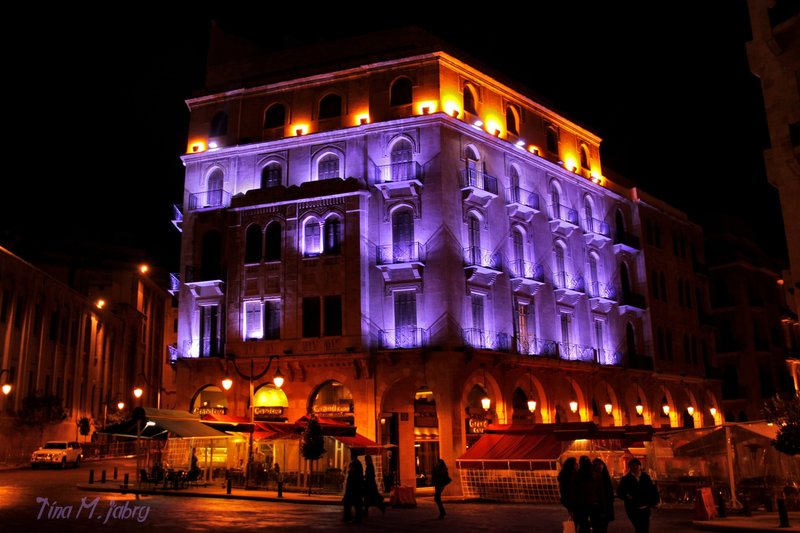
Sahat Al Nejme (Down Town Beirut)
.
- -- La Crèche (دور الحضانة) -- A decades long party held in a French Napoleonic Villa.
- -- [[]]
- -- [[]]
- -- [[]]
- -- [[]]
- -- [[]]
Bath-houses / Hammams
- -- Hammam Al Agha (Verdun)
- -- Hammam Shahrazad (Borj Hammoud)
- -- [[]]
- -- [[]]
- -- [[]]
Casinos
Cemeteries
- -- Bachoura Cemetery
- -- [[]]
- -- [[]]
- -- [[]]
- -- [[]]
- -- [[]]
City Government
- -- [[]]
- -- [[]]
- -- [[]]
- -- [[]]
- -- [[]]
Crime
- -- [[]]
- -- [[]]
- -- [[]]
- -- [[]]
- -- [[]]
Citizens of the City
- -- Clovis Michaud -- General Manager of the Beiruti Oriental Hotel.
- -- Makram Traverse -- Conserge at the Beiruti Oriental Hotel.
- -- Khalilah El-Ghazzawy -- Mature Lebanese Call-Girl
- -- Nazli Alfarsi -- Syrian medical student turned call-girl (Jason's pet-project).
- -- Atuf Darzi -- Ethiopian tailor and gambling addict.
- -- Wafi Mohammed -- Insurance salesman & lecher.
- -- Ghayth Kader -- Head of Lebanese Intelligence.
- -- [[]]
- -- [[]]
- -- Mathias Lefebvre
Mortal Groups
- -- Cabiri
- -- Eunuchs of the Phrygian Mother
- -- Servants of Eshmun
- -- The Orphic Circle
- -- Hezbollah -- A Shi'a Islamist militant group and political party based in Lebanon.
- -- [[]]
- -- [[]]
Other mortal-like Characters
- -- André Paquet
- -- [[]]
- -- [[]]
- -- [[]]
- -- [[]]
- -- [[]]
Visitors and World Travelers
- -- Abd al-Aziz Abdulrashid -- One of the nine pirate lords of the Mediterranean.
- -- Bahadur Zaman -- A ruthless pirate and the right-hand man of Abd al-Aziz Abdulrashid.
- -- Minoru Takenaka -- A Japanese manufacturer who regularly does business in Beirut. During a autumn trip to Dresden, in 2031, he lost one of his manufacturing plants in Beirut to Jason in a game of cards.
- -- Nur Tawfeek Al as-Saudi -- A spoiled Saudi prince who lost a yacht marina to Jason Maier in a game of cards in Dresden during the autumn of 2031.
- -- Madilyn Clarinda Garret -- The widow of the famed Hotel line magnate Lovel Garret of London.
- -- Sandro Mariani -- An Italian undercover Interpol agent who witness the destruction of Cagliari in December of 2031. {Lamberto}
- -- <<>>
- -- <<>>
- -- <<>>
- -- <<>>
- -- <<>>
- -- <<>>
- -- <<>>
- -- Volodya Kaminski -- Russian Oil Magnate.
- -- <<>>
- -- <<>>
- -- <<>>
- -- <<>>
- -- <<>>
- -- The Golden Jackal -- Infamous Mediterranean Assassin.
- -- Titania -- Goth-Opera Superstar.
Current Events
- -- [[]]
- -- [[]]
- -- [[]]
- -- [[]]
- -- [[]]
Factories
- -- Imperial Manufacturers of Beirut (Bouchrieh/Industrial zone)
- -- [[]]
- -- [[]]
- -- [[]]
- -- [[]]
Fortifications
- -- [[]]
- -- [[]]
- -- [[]]
- -- [[]]
- -- [[]]
Galleries
- -- [[]]
- -- [[]]
- -- [[]]
- -- [[]]
- -- [[]]
- -- [[]]
- -- [[]]
- -- [[]]
- -- [[]]
- -- [[]]
Holy Ground
- -- Eglise de Saint Louis Capucin
- -- Mohamed Al-Amin Mosque {Recently built}
- -- [[]]
- -- [[]]
- -- [[]]
- -- [[]]
- -- [[]]
- -- [[]]
- -- [[]]
- -- [[]]
- -- [[]]
- -- [[]]
Hospitals
- -- [[]]
- -- [[]]
- -- [[]]
- -- [[]]
- -- [[]]
Hotels & Hostels
- -- Beiruti Oriental Hotel -- Formerly owned by Garret Hotel chain of London.
- -- [[]]
- -- [[]]
- -- [[]]
- -- [[]]
- -- [[]]
- -- [[]]
- -- [[]]
- -- [[]]
- -- [[]]
Landmarks
- -- Raouche Rocks, Raouché Bay
- -- [[]]
- -- [[]]
- -- [[]]
- -- [[]]
- -- [[]]
- -- [[]]
- -- [[]]
- -- [[]]
- -- [[]]
- -- [[]]
Maps
Marinas
- -- La Marina Joseph Khoury (Dbayeh)
Market Places
- -- Souk El Tayeb
- -- [[]]
- -- [[]]
- -- [[]]
- -- [[]]
Mass Media
- -- [[]]
- -- [[]]
- -- [[]]
- -- [[]]
- -- [[]]
Monuments
- -- [[]]
- -- [[]]
- -- [[]]
- -- [[]]
- -- [[]]
- -- [[]]
- -- [[]]
- -- [[]]
- -- [[]]
- -- [[]]
Museums
- -- Beirut City History Museum
- -- National Museum of Beirut (متحف بيروت الوطنيّ) - {Elysium}
- -- Planet Discovery
- -- [[]]
- -- Robert Mouawad Private Museum
- -- St. Georges Cathedral Museum
National Government
- -- [[]]
- -- [[]]
- -- [[]]
- -- [[]]
- -- [[]]
Parks
The Beirut Central District contains over 60 gardens, squares and open spaces. These spaces comprise landscaped streets, gardens, historical squares, pedestrian areas and sea promenades thus totaling to an area of 96 acres (39 ha) of open spaces. This makes the BCD home to 50% of the entire public spaces in Beirut, despite the fact that the BCD itself is only 10% of Beirut City. These public spaces gradually developed into a thriving social scene for the Beirut residents, thanks in part to the city's mild weather. City officials have imposed several plans to attract the urban users and the nature lovers to Beirut's squares and spaces. One of the plans is a "temporary uses" policy focused on a rambla pedestrian spine that links the existing city center and Beirut Souks northwards to the terraced corniche and promenade. The spine is now open for jogging and cycling, with surrounding roads being closed off to traffic on the weekends. They also include street markets and festivals, health and environment awareness campaigns, cat walks and dog shows.
- -- Beirut Shoreline Walk
- -- Castle Square Belvedere Park
- -- Imam Ouzai Square
- -- Khalil Gibran Garden
- -- Khan Antoun Bey Square
- -- Martyrs' Square
- -- Nejme Square
- -- National Unity Square
- -- Rafik Hariri Memorial Garden
- -- Roman Baths Garden
- -- Samir Kassir Square
- -- Sea Corniche
- -- The Garden of Forgiveness
- -- Waterside Park
- -- Zeytouneh Square
Private Residences
- -- The Grand Serail -- The First Residence and the offices of the Prime Minister of Lebanon.
- -- [[]]
- -- [[]]
- -- [[]]
- -- [[]]
- -- [[]]
The 13 Quarters of Beirut
Description: Beirut is divided into 13 quarters (quartiers), which are further sub-divided into sectors (secteurs). Two of the thirteen official Palestinian refugee camps in Lebanon are located in the southern suburbs of Beirut: Bourj el-Barajneh and Shatila. There is also one within its municipal boundaries of Mar Elias. Of the fifteen unregistered or unofficial refugee camps, Sabra, which lies adjacent to Shatila, is also located in southern Beirut.
Note: People in Lebanon often use different names for the same geographic locations, and few people rely on official, government-provided street numbers. Instead, historic and commercial landmarks and location codes such as PinLiban are more common.
- -- <<Achrafieh>>
- -- <<Bachoura>>
- -- <<Dar El Mreisse>>
- -- <<Mazraa>>
- -- <<Medawar>>
- -- <<Minet El Hosn>>
- -- <<Moussaitbeh>>
- -- <<Port Beirut>>
- -- <<Ras Beirut>>
- -- <<Rmeil>>
- -- <<Saifi>>
- -- <<Zuqaq al-Blat>>
- -- <<Beit Mery>> -- A mountain town (basically an outer suburb) a little over 2000 feet above Beirut, including views of Beirut in the distance.
Restaurants
- -- El Paladar -- {Cuban Restaurant & Bar}
- -- [[]]
- -- [[]]
- -- [[]]
- -- [[]]
- -- [[]]
Ruins
- -- [[]]
- -- [[]]
- -- [[]]
- -- [[]]
- -- [[]]
- -- [[]]
- -- [[]]
- -- [[]]
- -- [[]]
- -- [[]]
Schools
- -- American University of Beirut
- -- [[]]
- -- [[]]
- -- [[]]
- -- [[]]
- -- [[]]
Shopping
- -- [[]]
- -- [[]]
- -- [[]]
- -- [[]]
- -- [[]]
Telecommunications
- -- [[]]
- -- [[]]
- -- [[]]
- -- [[]]
- -- [[]]
Theaters
- -- Conservatoire Libanais
- -- [[]]
- -- [[]]
- -- [[]]
- -- [[]]
Transportation
- -- Beirut–Rafic Hariri International Airport (مطار بيروت) -- Formerly Beirut International Airport, is located 9 kilometers (5.6 mi) from the city center in the southern suburbs of Beirut, Lebanon, and is the only operational commercial airport in the country.
- -- Port of Beirut ( مرفأ بيروت) -- The Port of Beirut is the main port in Lebanon located in the capital city, Beirut, and is one of the largest ports on the Eastern Mediterranean.
Vampires of the City
Le Supplice
Le Supplice is a French term that translates roughly as "the place of torment", where any Kindred may hunt freely without having to ask the permission of another immortal, save for the acknowledgement of the local prince. In Beirut, all Palestinian refugee camps, regardless of their official status or lack thereof, are consider to be "Le Supplice" (the Rack). All Kindred who have received the nod-of-acceptance from Beirut's baroness may feed freely from any of the four Palestinian refugee camps in southern Beirut. "Le Supplice" includes of the four following refugee camps: Bourj el-Barajneh, Shatila, Mar Elias and Sabra.
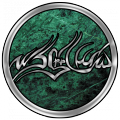 Banu Haqim (بني حكيم)
Banu Haqim (بني حكيم)
- -- Aysel Avci -- The Mother of Peace.
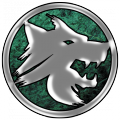 Wah'Sheen (وا "شين)
Wah'Sheen (وا "شين)
- -- Erkin Alfarsi -- Guardian of the Streets.
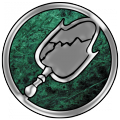 Bay't Majnoon (البيت مجنون)
Bay't Majnoon (البيت مجنون)
- -- Iskandar Bousaid -- Speaker for the Jinn.
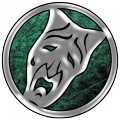 Bay't Mutasharid (البيت متشرد)
Bay't Mutasharid (البيت متشرد)
- -- Omar Nawwar -- The Millionaire Beggar of Hamra.
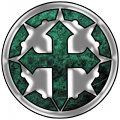 Bay't Mujrim (بيت المجرم)
Bay't Mujrim (بيت المجرم)
- -- Masood Amirmoez -- The Palestinian Rook.
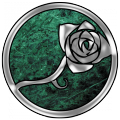 Clan Toreador
Clan Toreador
The Toreador of Beirut are led by the French aristocratic Baroness Océane D'aramitz. She is the undisputed ruler of Beirut, largely through her extensive brood of childer and her unparalleled social charms. The Toreador of Beirut are all of French extraction, by route of Paris and the prince, er...Baroness is supposedly the grand-childe of Francois Villon, the legendary prince of Paris. The only non-francophone artiste in the city, is the crude American porn star Derrick Zeel whose odious presence is the only obstacle preventing Beirut from being a tasteful Toreador paradise, at least in the eyes of the Baroness.
- -- Océane D'aramitz -- Baroness of Beirut.
- -- Rainier Sauvageau -- Eldest Progeny of the Baroness.
- -- Valérian Cloutier -- Second Progeny of the Baroness.
- -- Benoit Dubois -- Unreleased Progeny and Childe of the Baroness.
- -- Derrick Zeel -- The King of Porn.
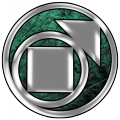 Clan Tremere
Clan Tremere
- -- Gisèle Bissette -- Professor of Archeology at the American University of Beirut.
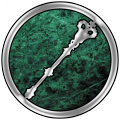 Clan Ventrue
Clan Ventrue
- -- Shachar Ezra -- The Israeli Private Detective.
 Deceased and Exiled vampires of Beirut
Deceased and Exiled vampires of Beirut
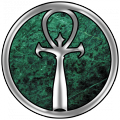 Vampiric Guests of Beirut
Vampiric Guests of Beirut
Elders
- -- Master Jagdish -- Naga Raja -- Lord of the World.
- -- Baldesar Rossellini -- Deposed Head of the Rossellini client family of Clan Giovanni. {Hunted by the Giovanni}
- -- Masood Ajam -- Assamite Vizier -- Banu Haqim Councilor of Isfahan.
- -- Shug Dunsirn -- Giovanni Bounty hunter.
- -- Sizwe Ghiberti -- Giovanni Bounty hunter.
Ancilla
- -- Brian O’Reilly -- Ventrue Viking.
- -- Jeremy Sanderson -- True Brujah Entrepreneur.
Neonates
- -- Jason Maier -- Assamite Armament Genius, Billionaire Gambling Tycoon, and Humanitarian Philanthropist.
- -- Christinana Guillory -- Assamite Vizier Progeny of Jason Maier & grand-childe of Masood Ajam.
- -- Brenda Maier -- Cannibal Necronomist.
- -- Cassandra Fonseca -- Elois Private Detective.
- -- Hugo Satrix -- Master Pickpocket and Novice Deceiver.
A Mummy in Beirut
- -- Empress Julia Domna -- Roman Immortal and Ancient Queen.
Ghosts of an Ancient City
Lebanese Shape-changers
Middle Eastern Fae
Muslim Mages
Websites
http://www.beirut.com/ {My new favorite website on Beirut.}
http://www.bing.com/images/search?q=beirut+lebanon&qpvt=beirut+lebanon&FORM=IGRE#a
http://www.tourist-destinations.com/2013/06/beirut-lebanon-travel-guide-and-travel.html
http://speedphreaksworld.blogspot.com/2012/10/lebanon-amazing-country-only-of-its-kind.html
http://poshcamel.com/2011/07/06/beirut-baby/
http://www.hubculture.com/groups/47/news/10/
http://www.middleeast.com/baalbeck.htm {Roman Ruins}
http://www.habeeb.com/lebanon.photos.07.beirut.from.air.aerial.html {Beirut Photos}
http://tonio1984.deviantart.com/art/Beirut-Lebanon-137752219 {Excellent Photos of Beirut}
http://blog.travelpod.com/travel-blog-entries/saktophe/1/1248782229/tpod.html
http://www.bing.com/images/search?q=beirut+lebanon&qpvt=beirut+lebanon&FORM=IGRE#a {Random Photos}
http://www.habeeb.com/lebanon.photos.43.html {Endless photos of the city and Lebanon)
https://www.flickr.com/photos/fouadgm/5020750973/in/photostream/ {flickr photostream}
http://almashriq.hiof.no/lebanon/900/910/912/maps/beirut/
http://www.lebanontourguide.com/beirut.cfm (Ok)
http://en.wikipedia.org/wiki/Beirut_Central_District

